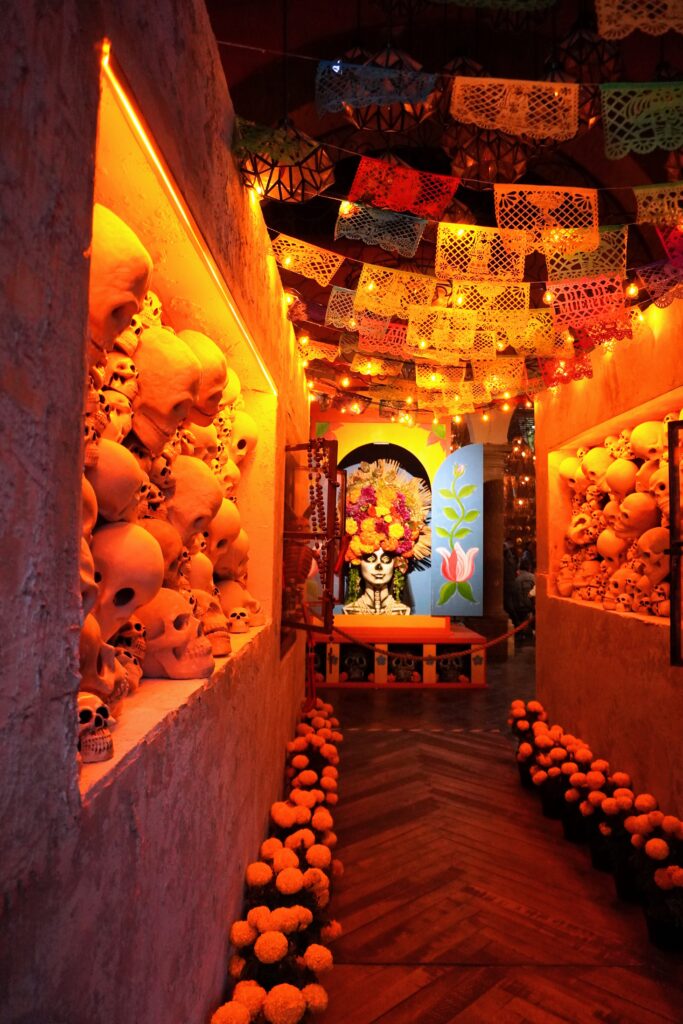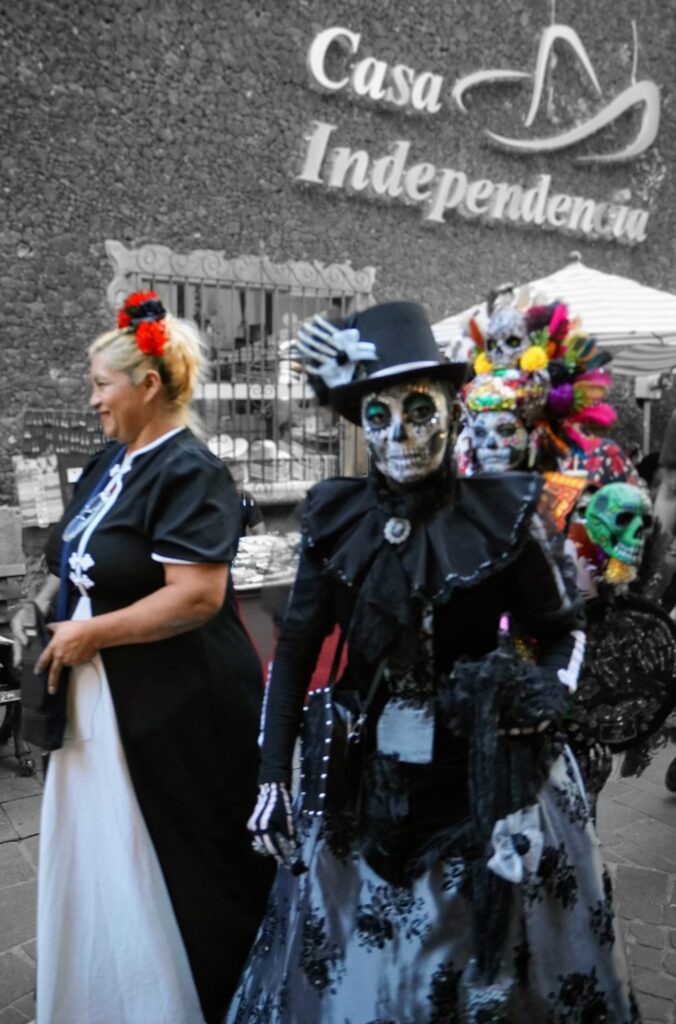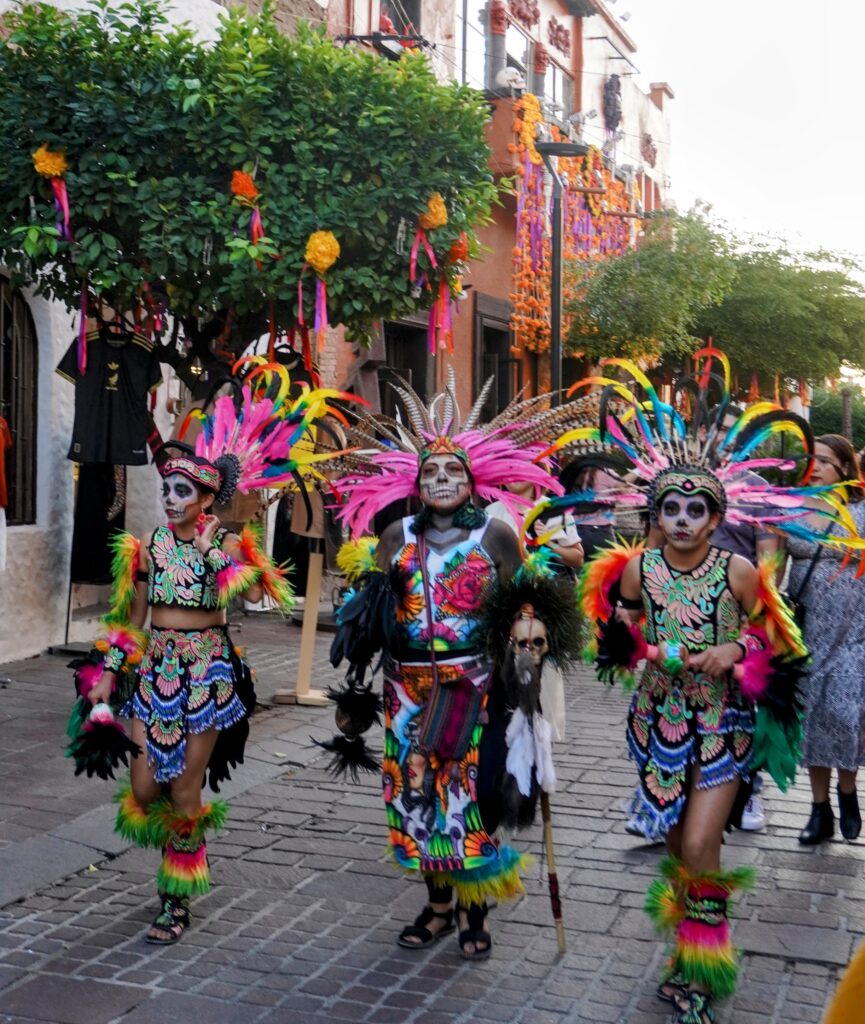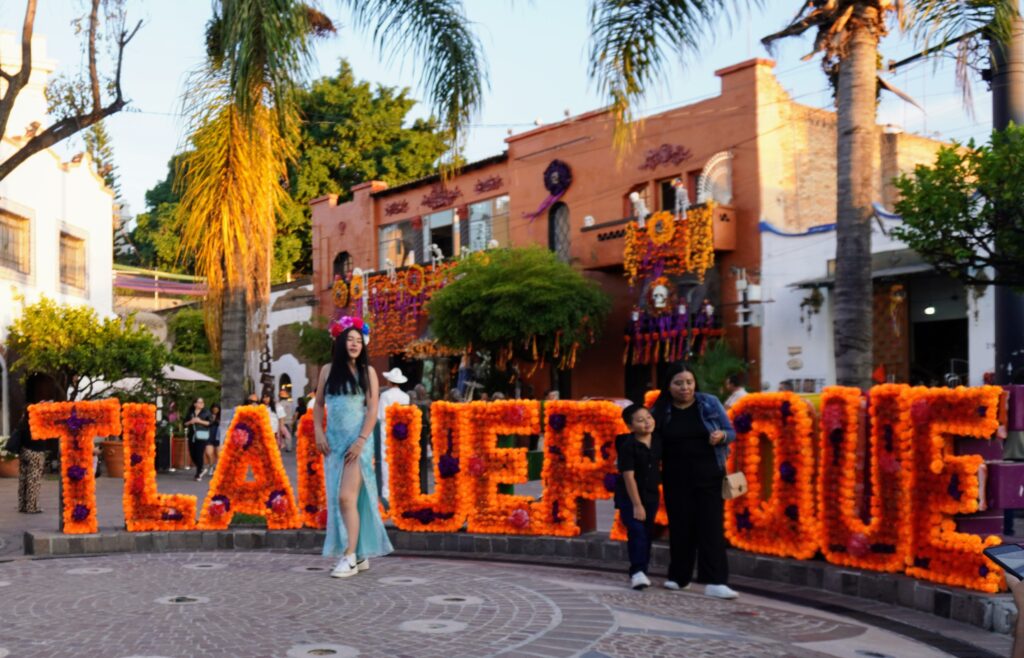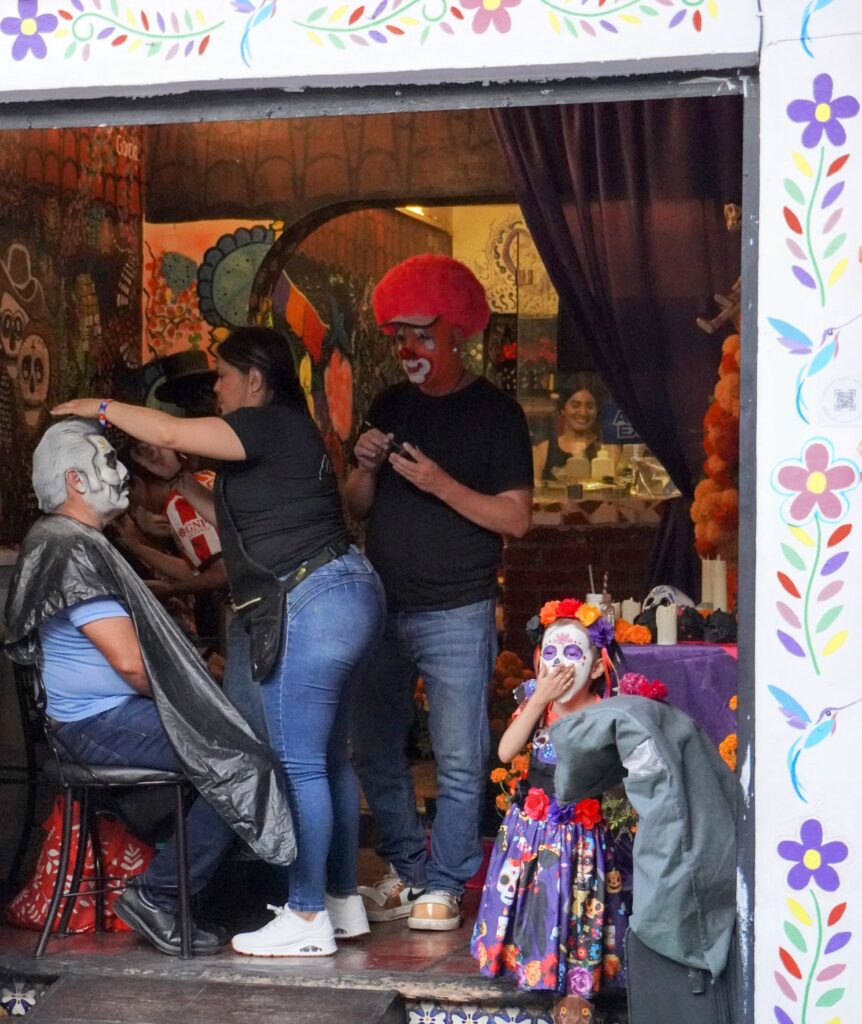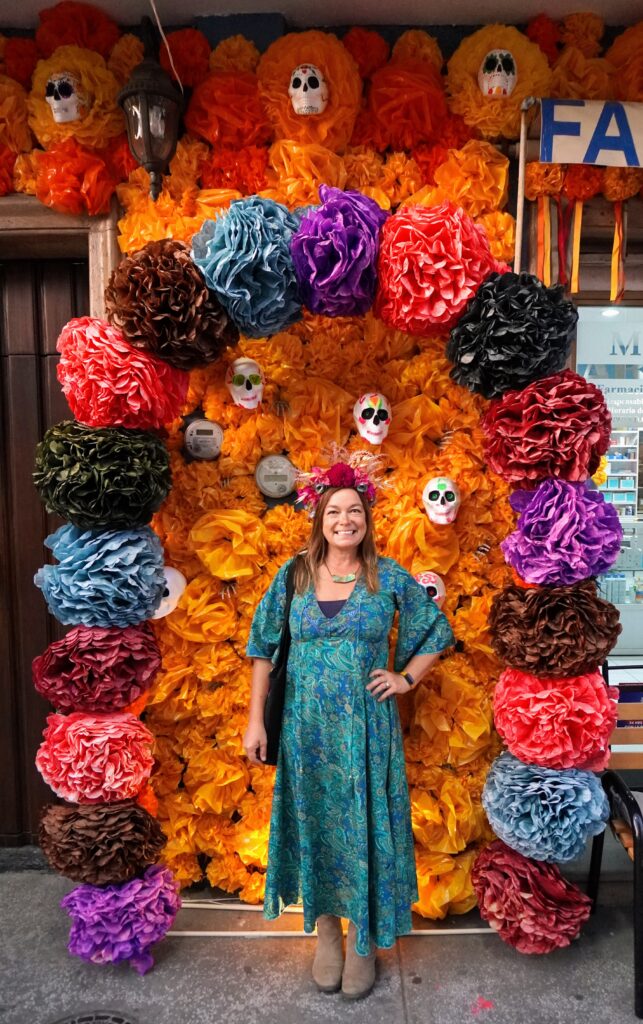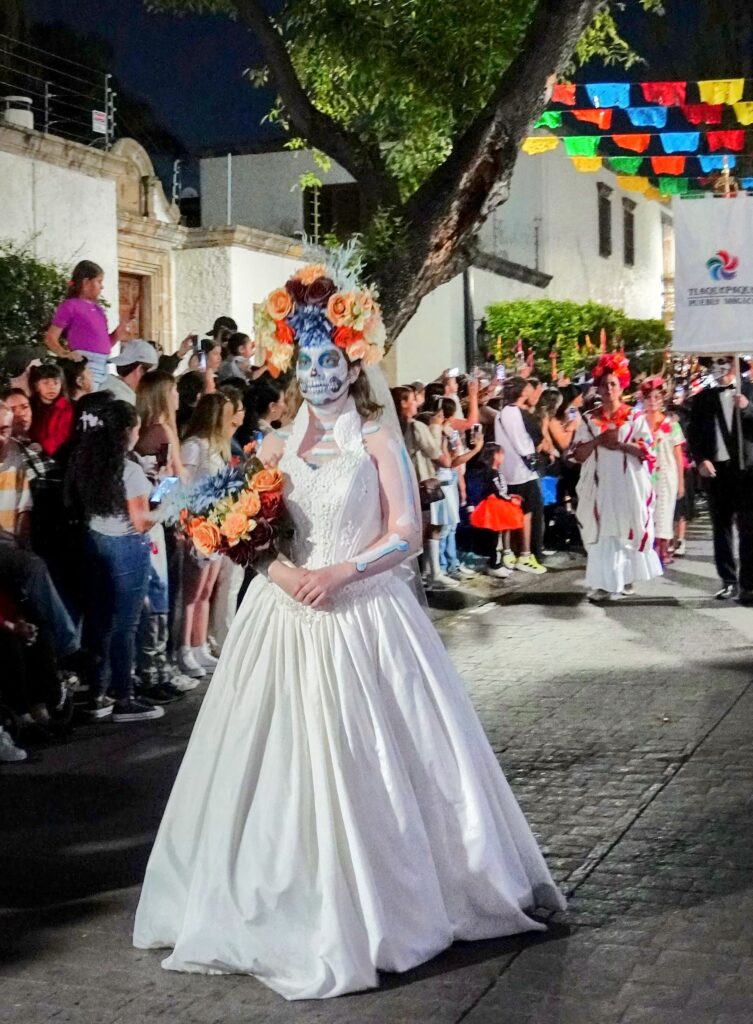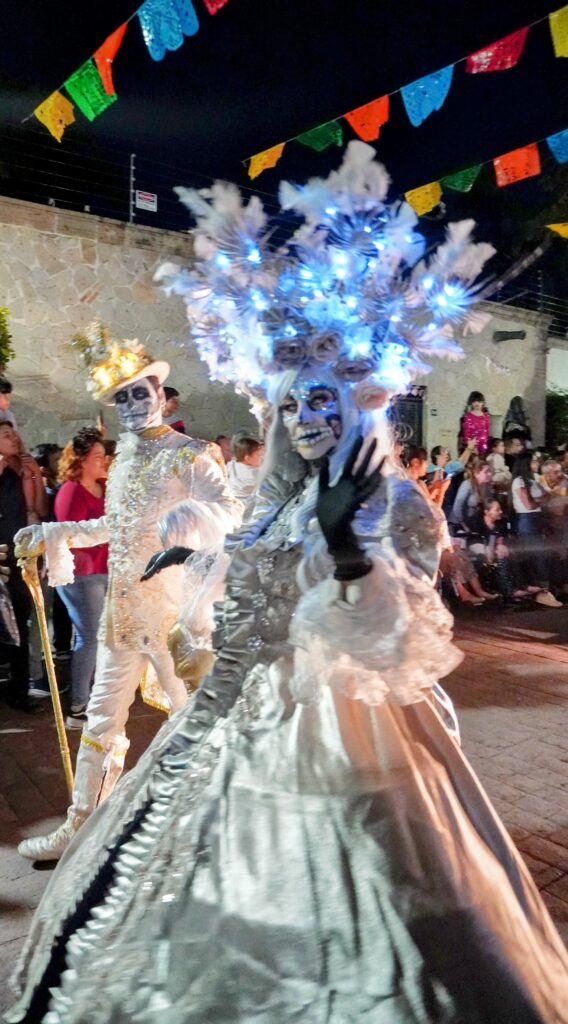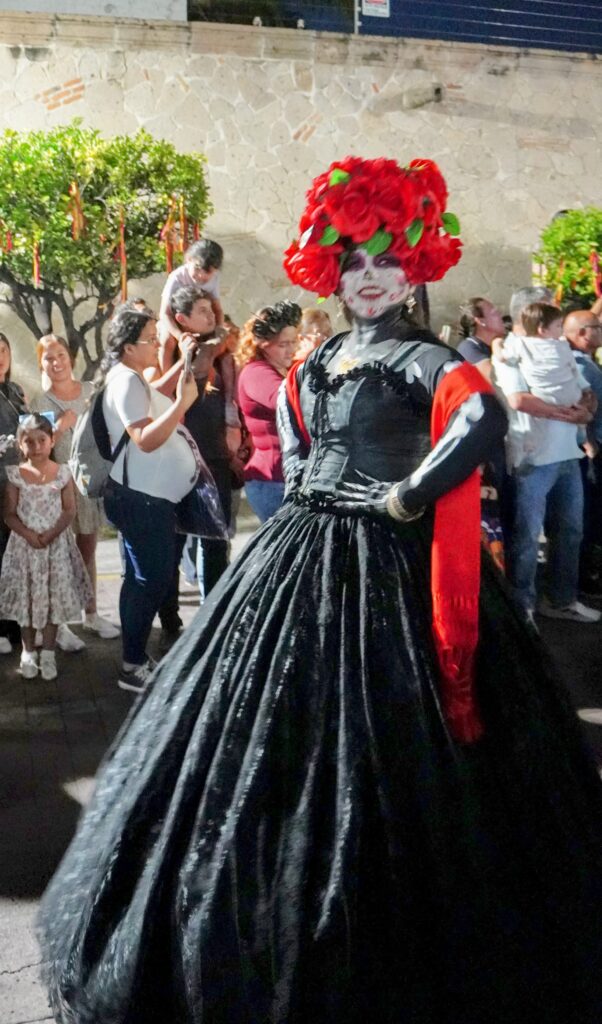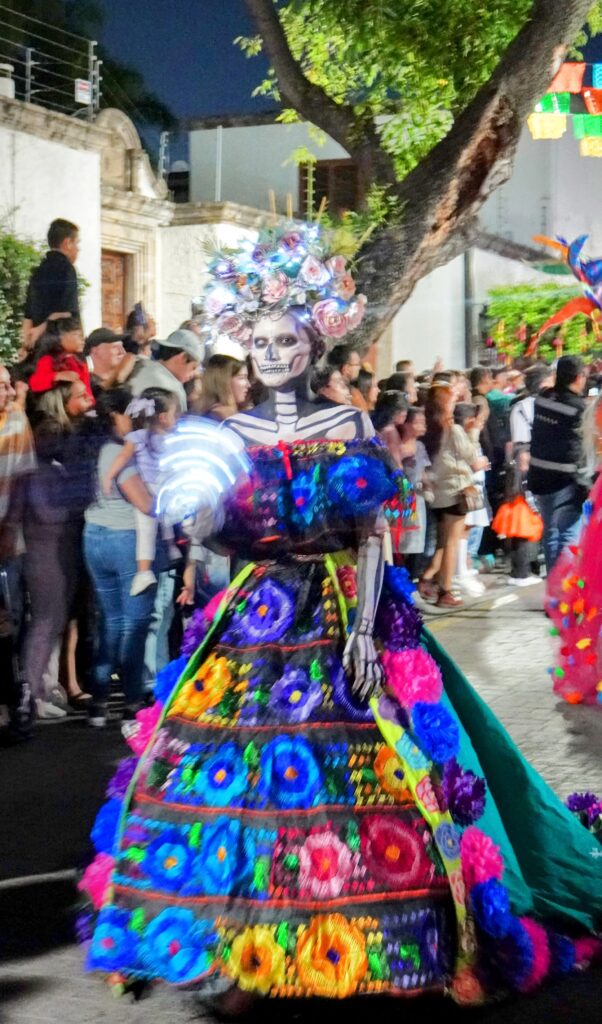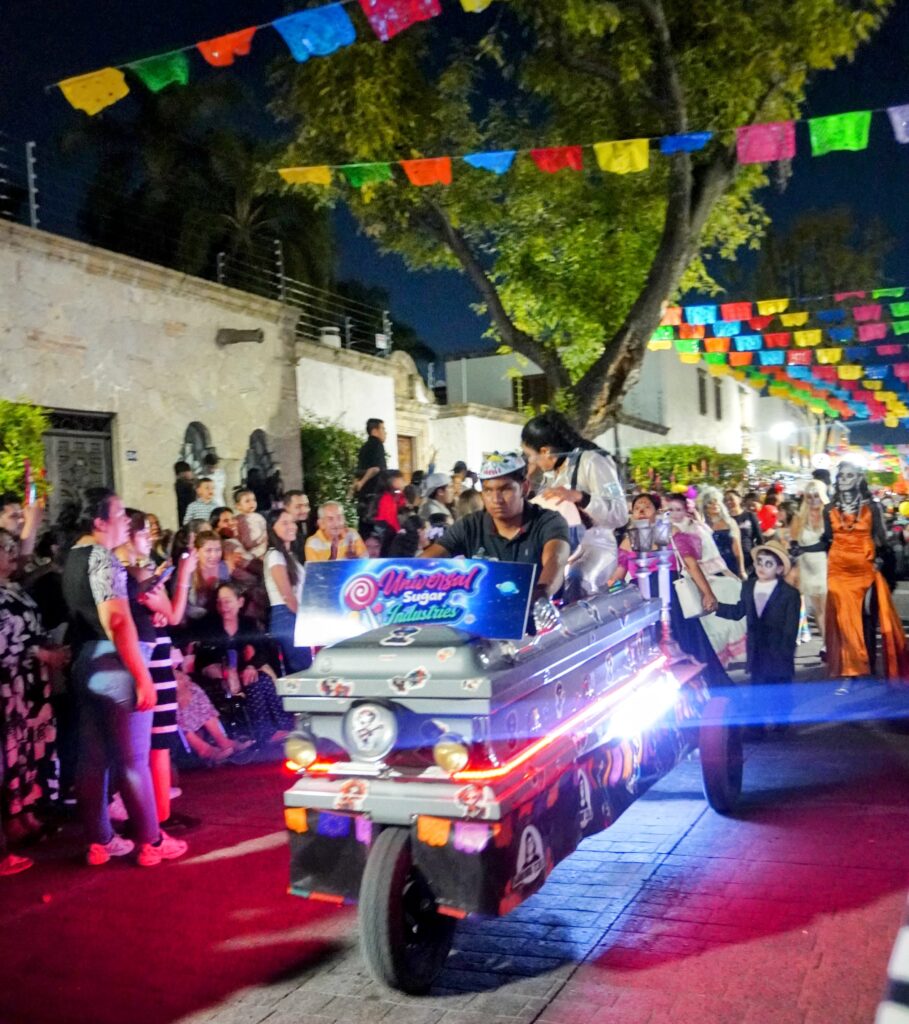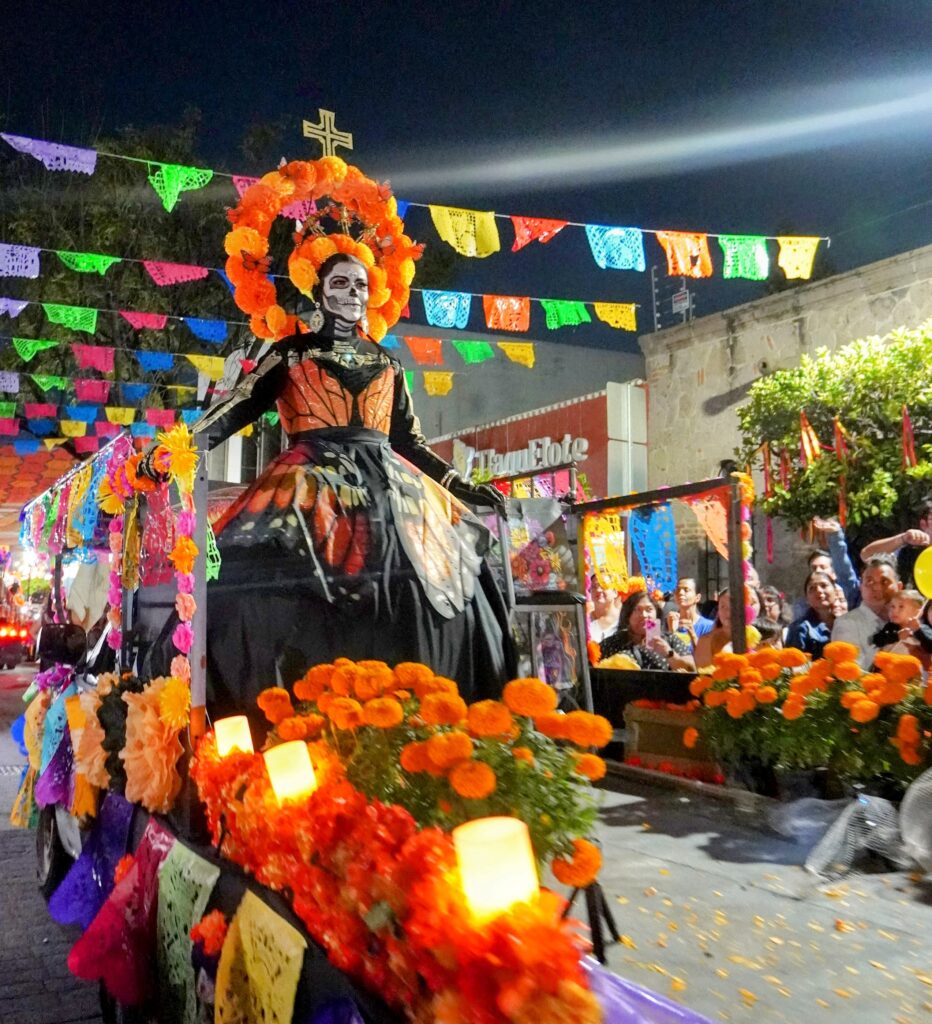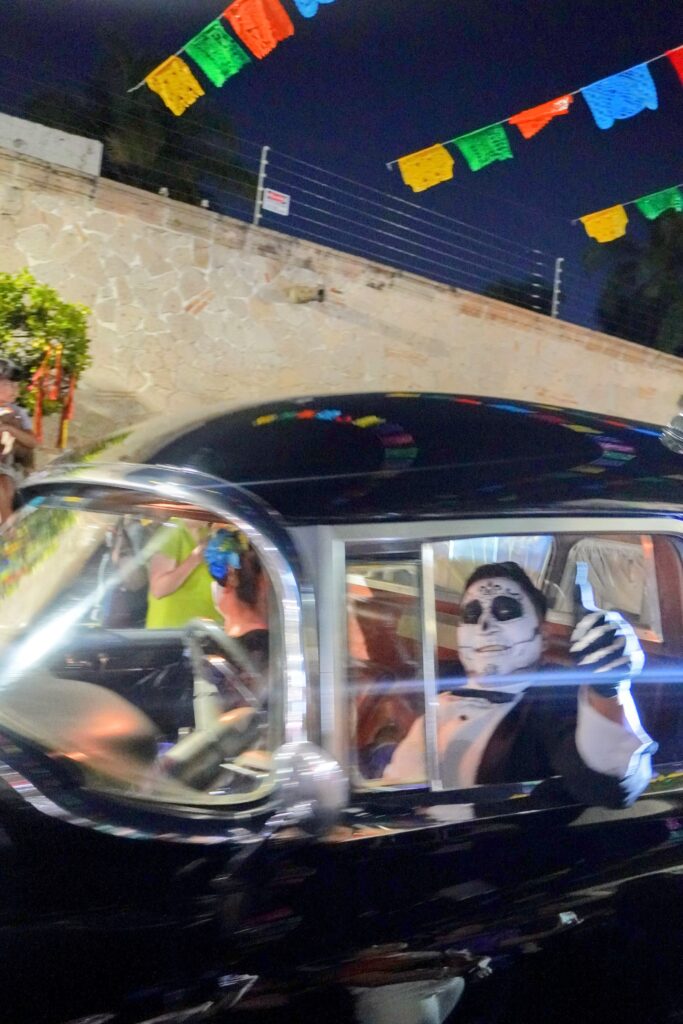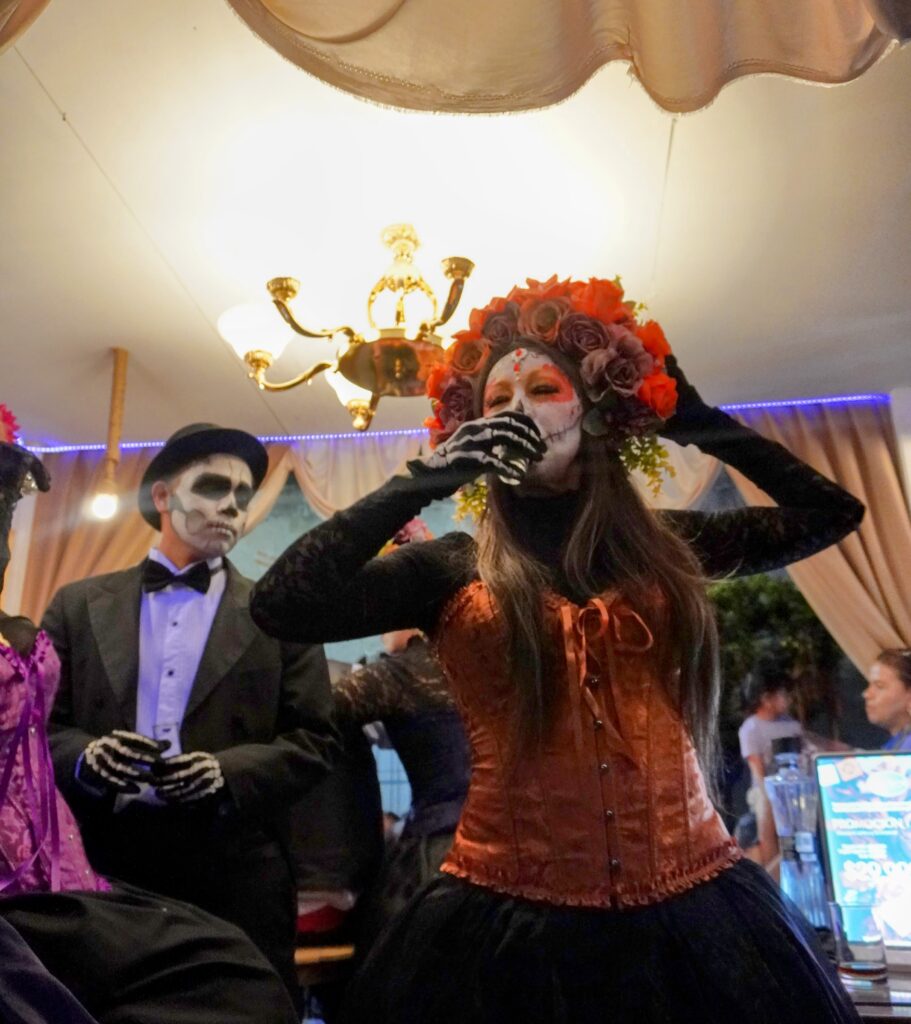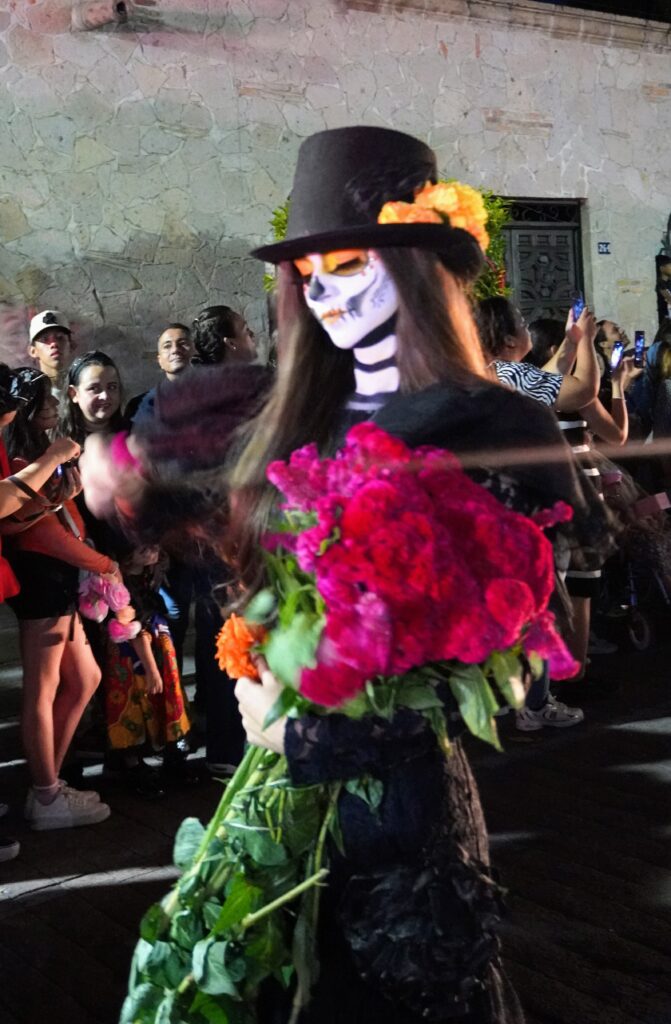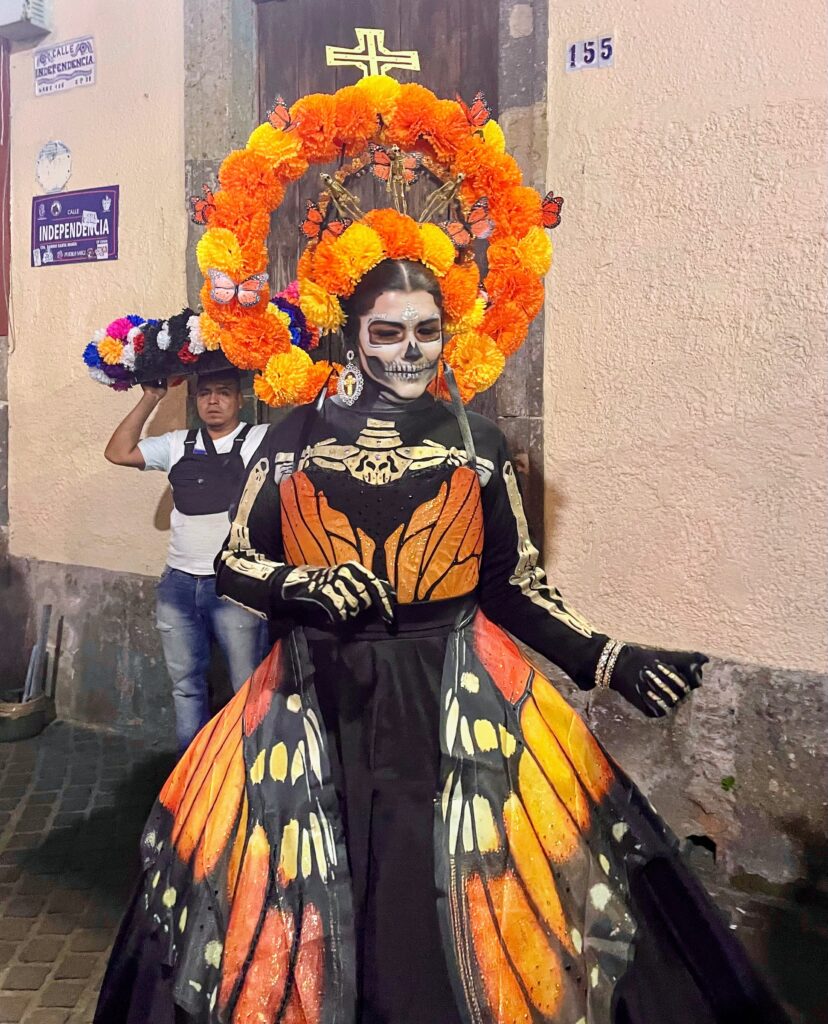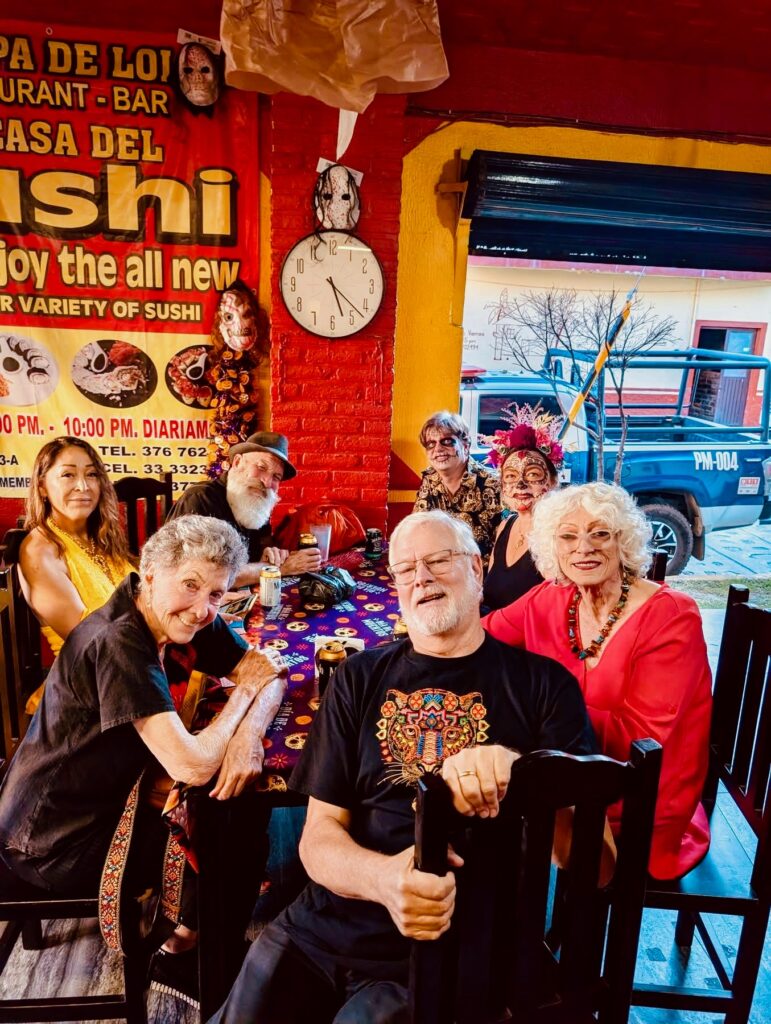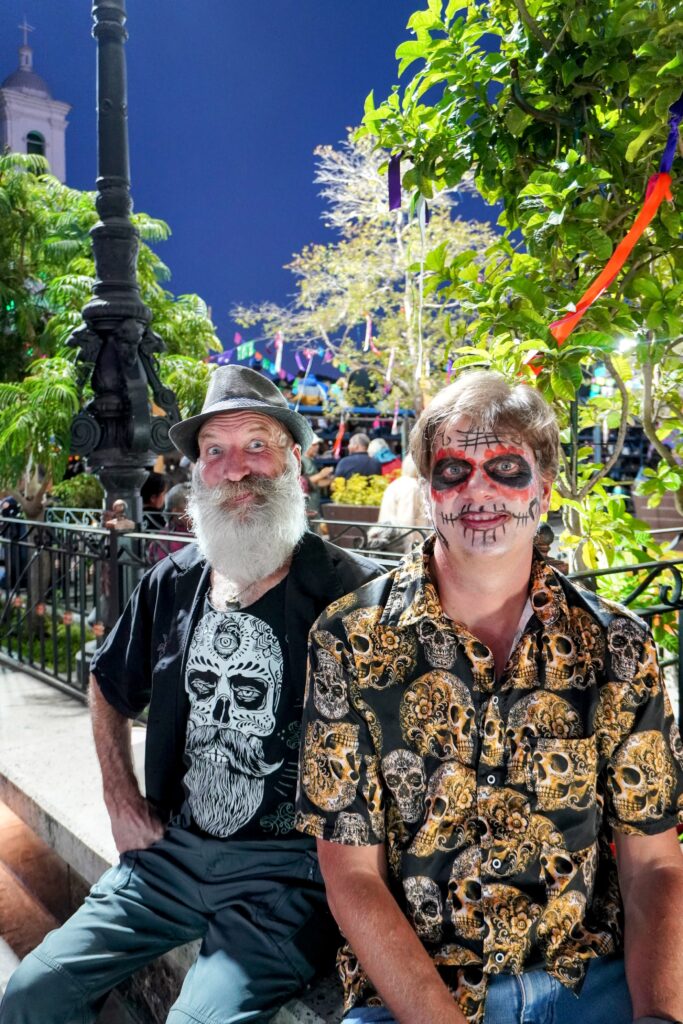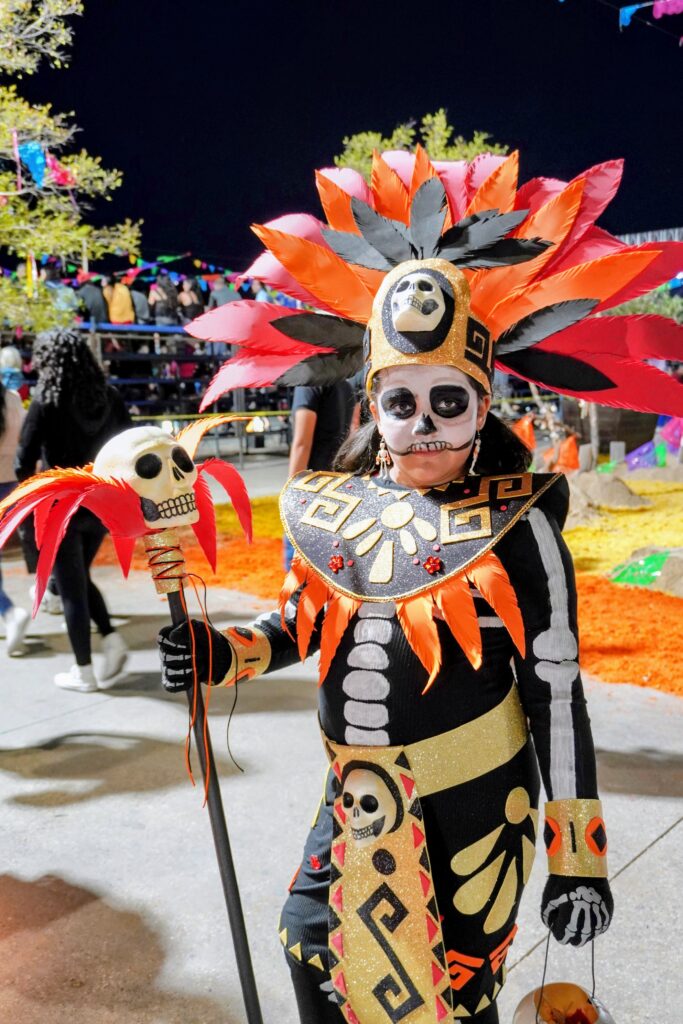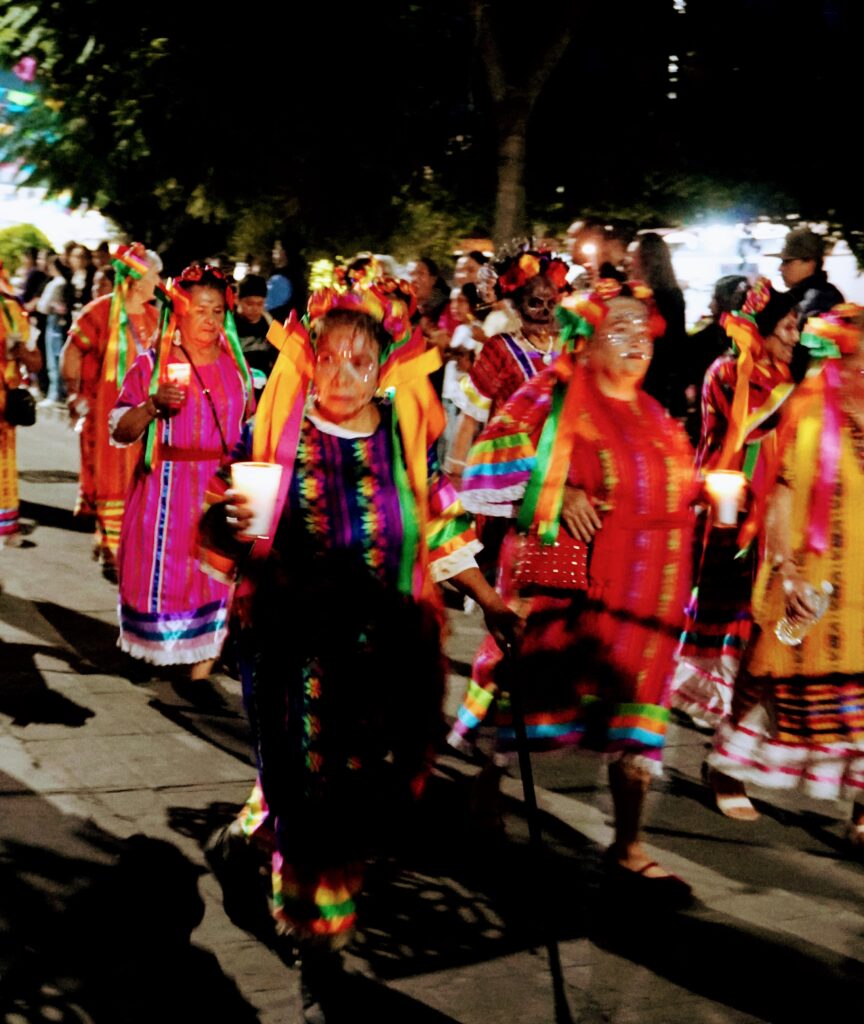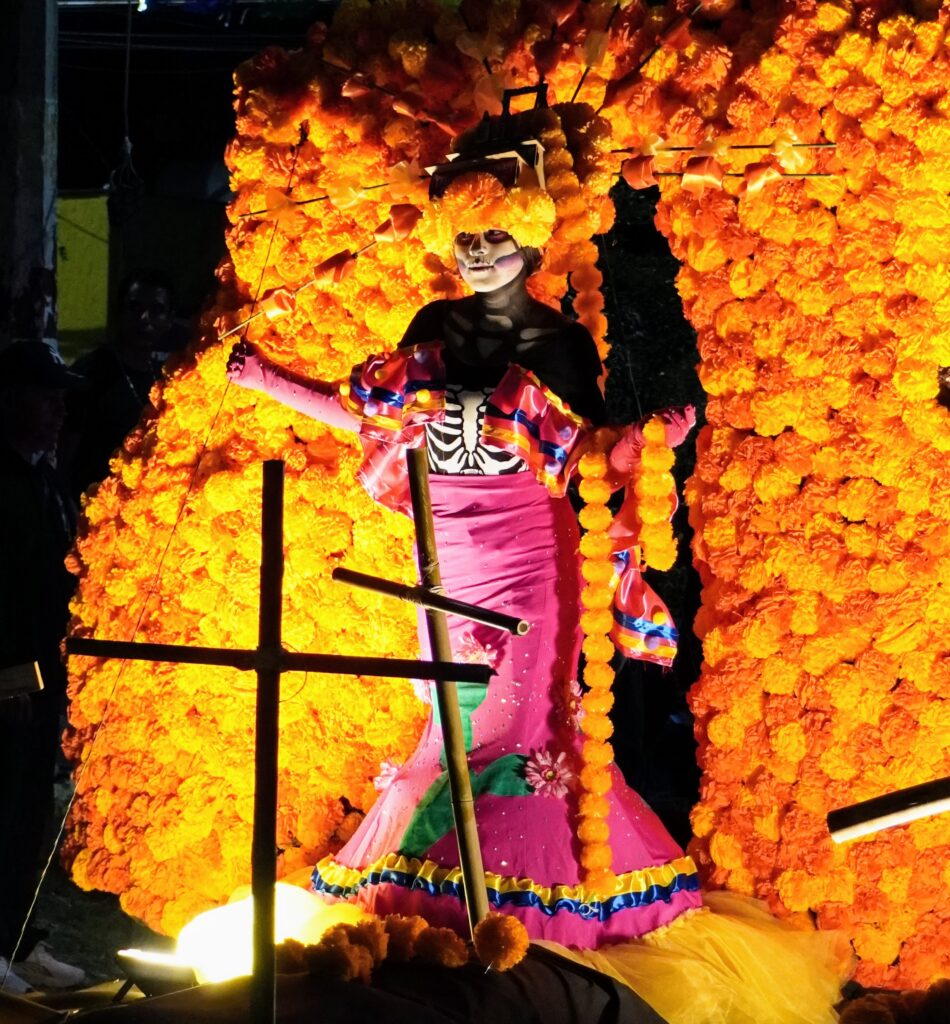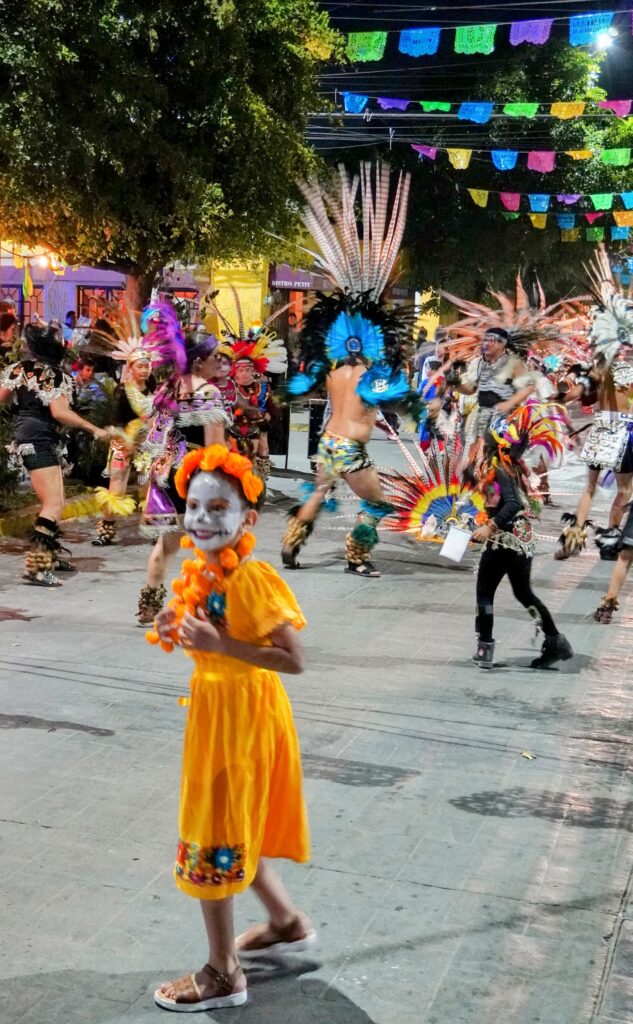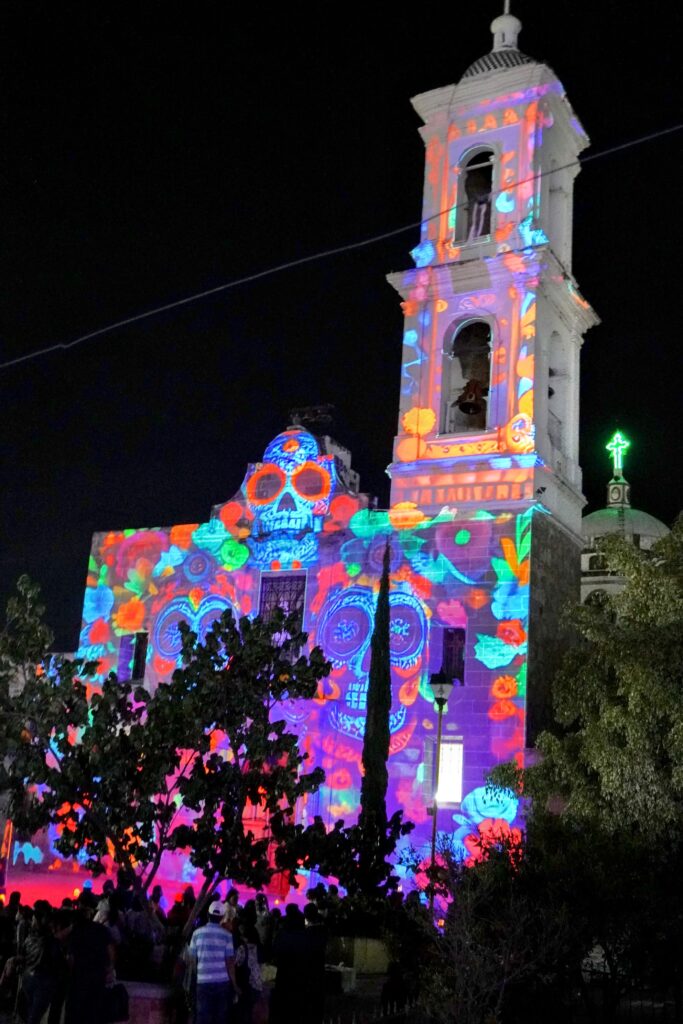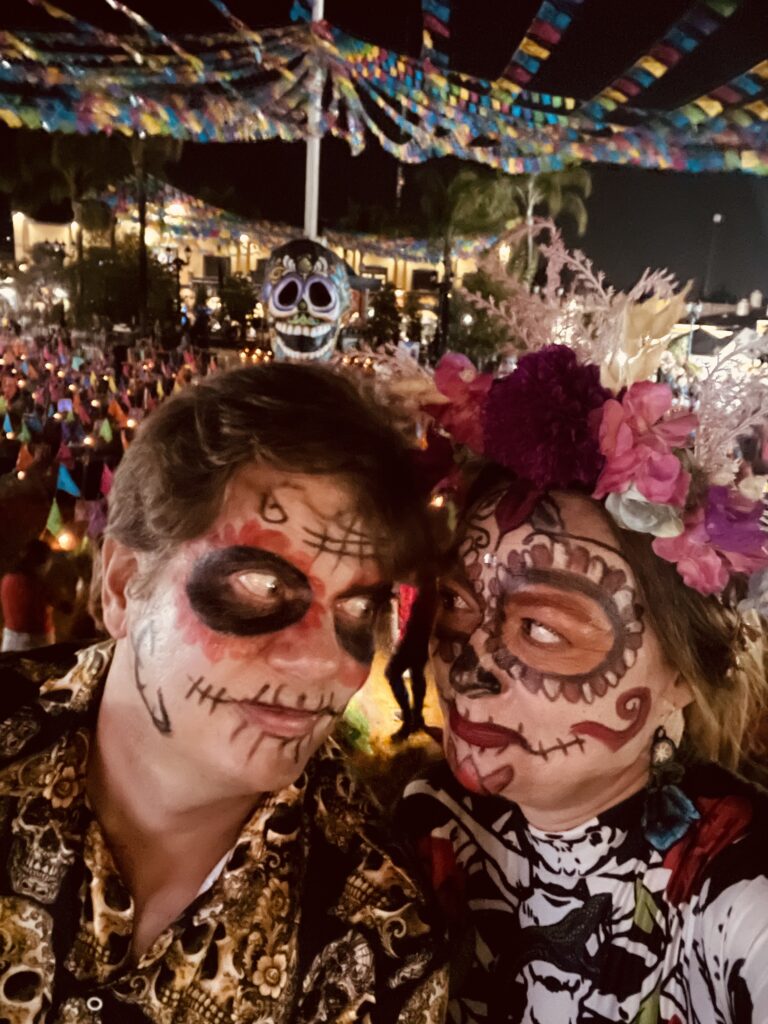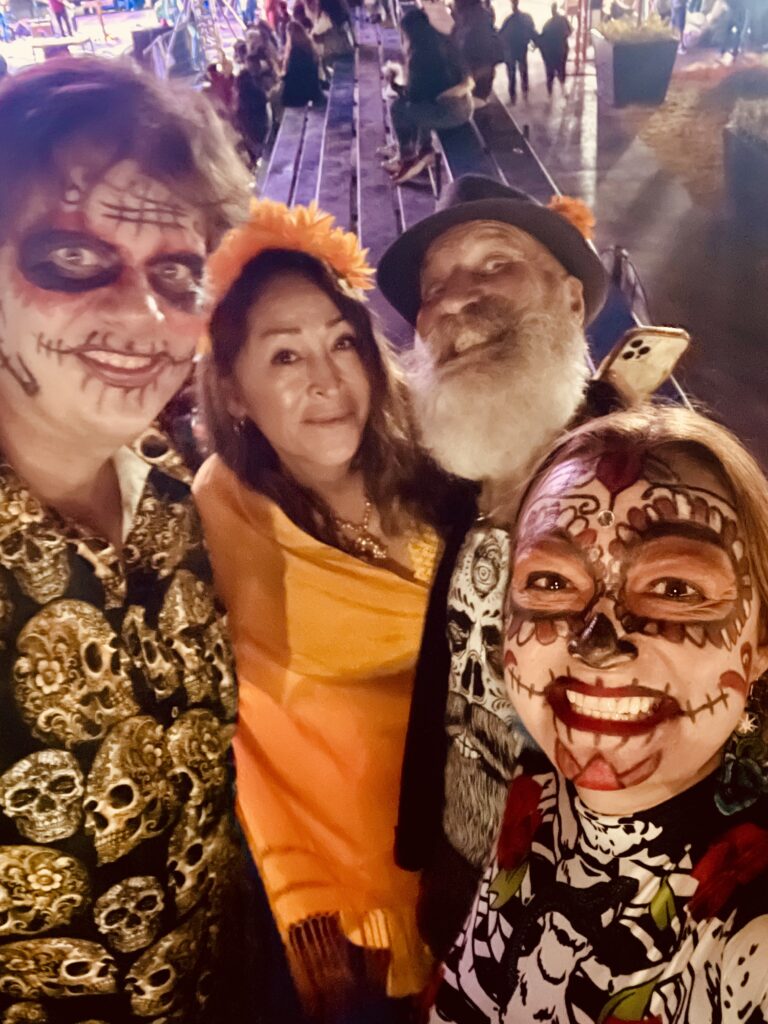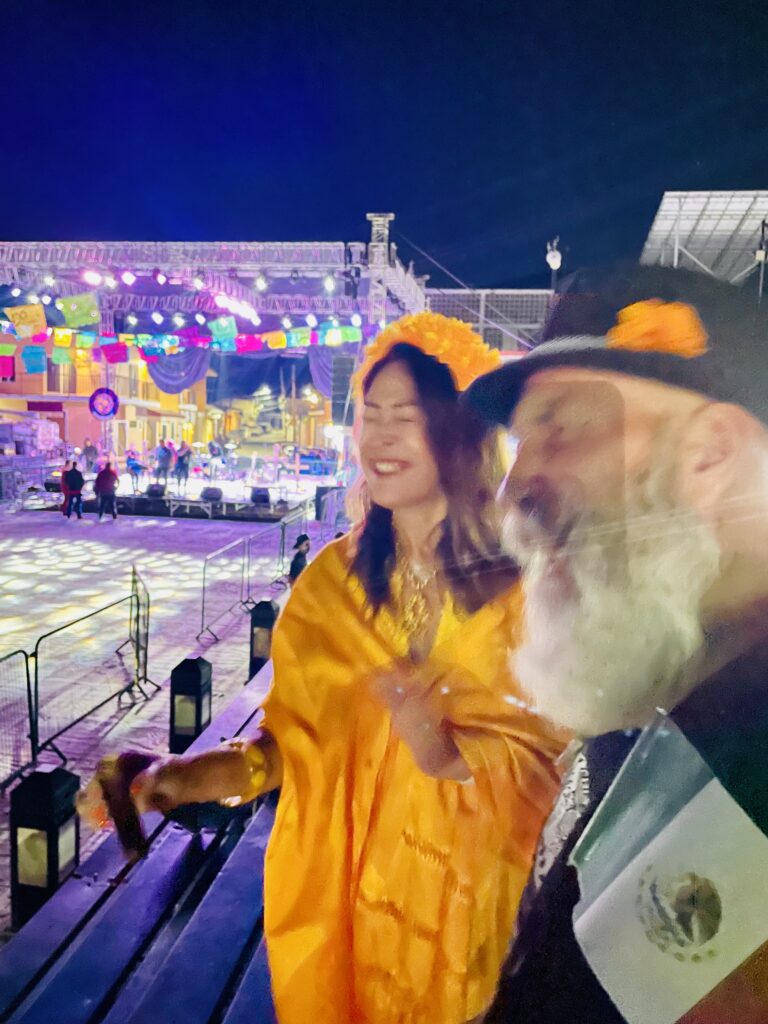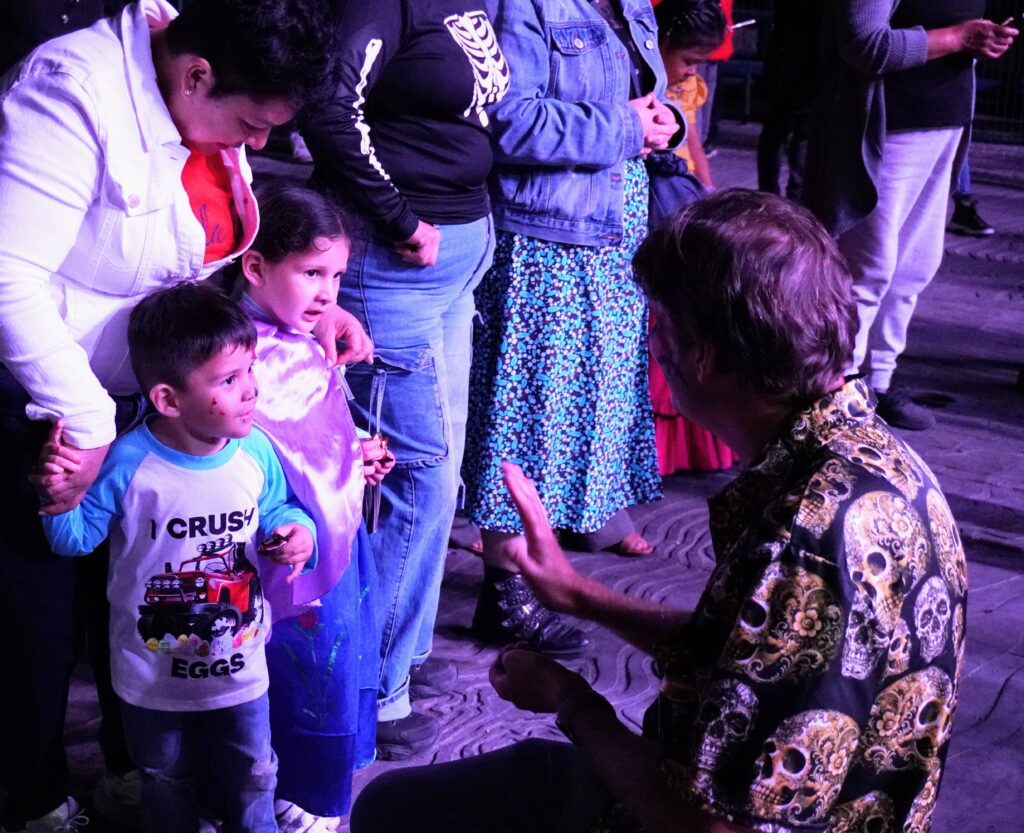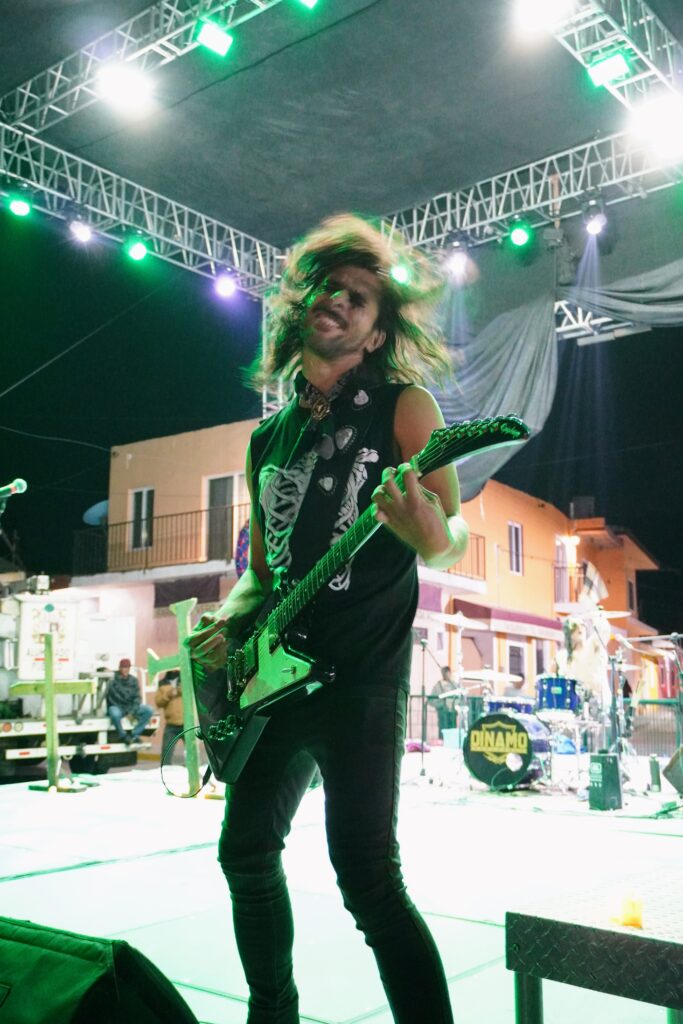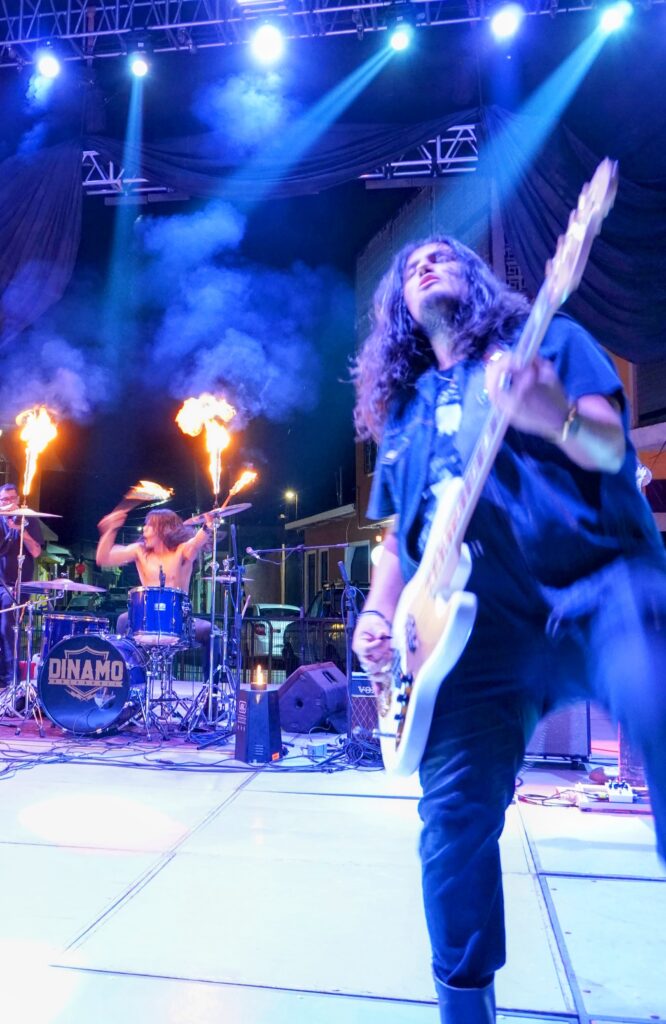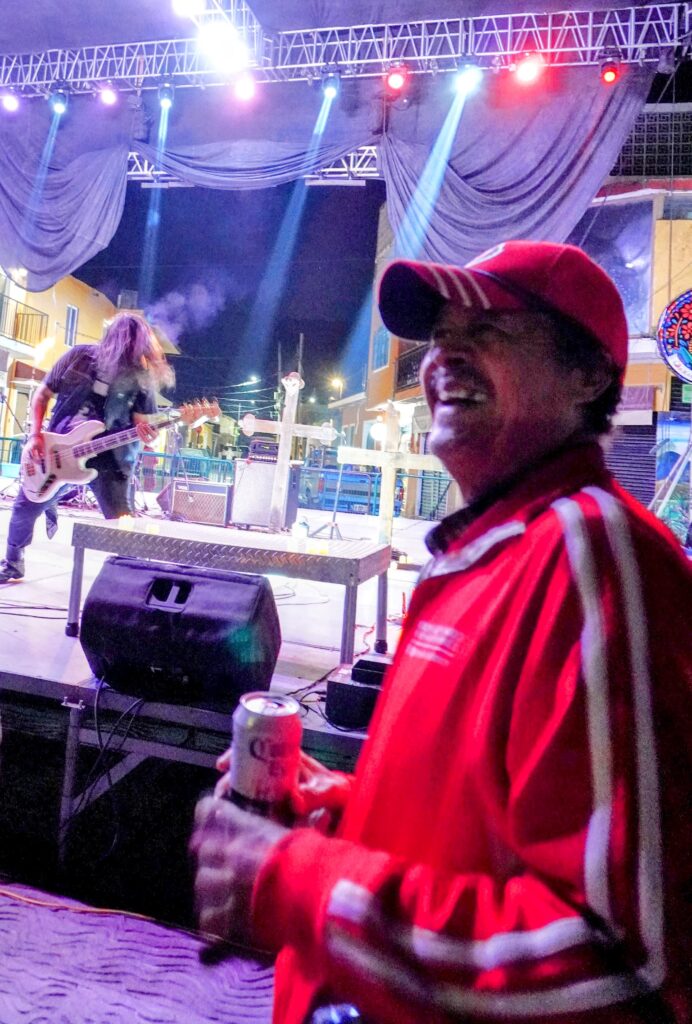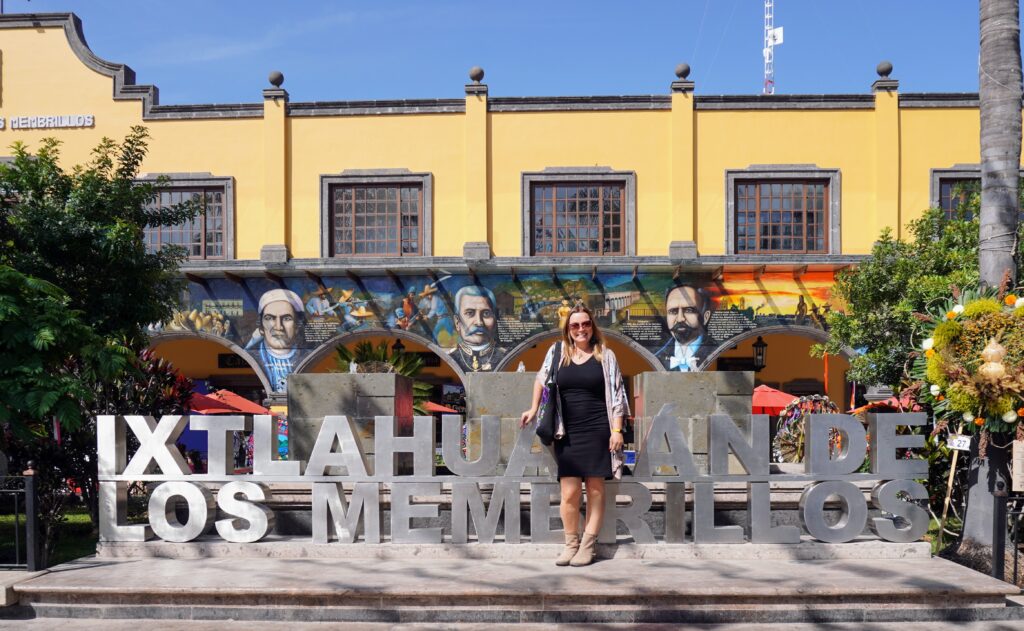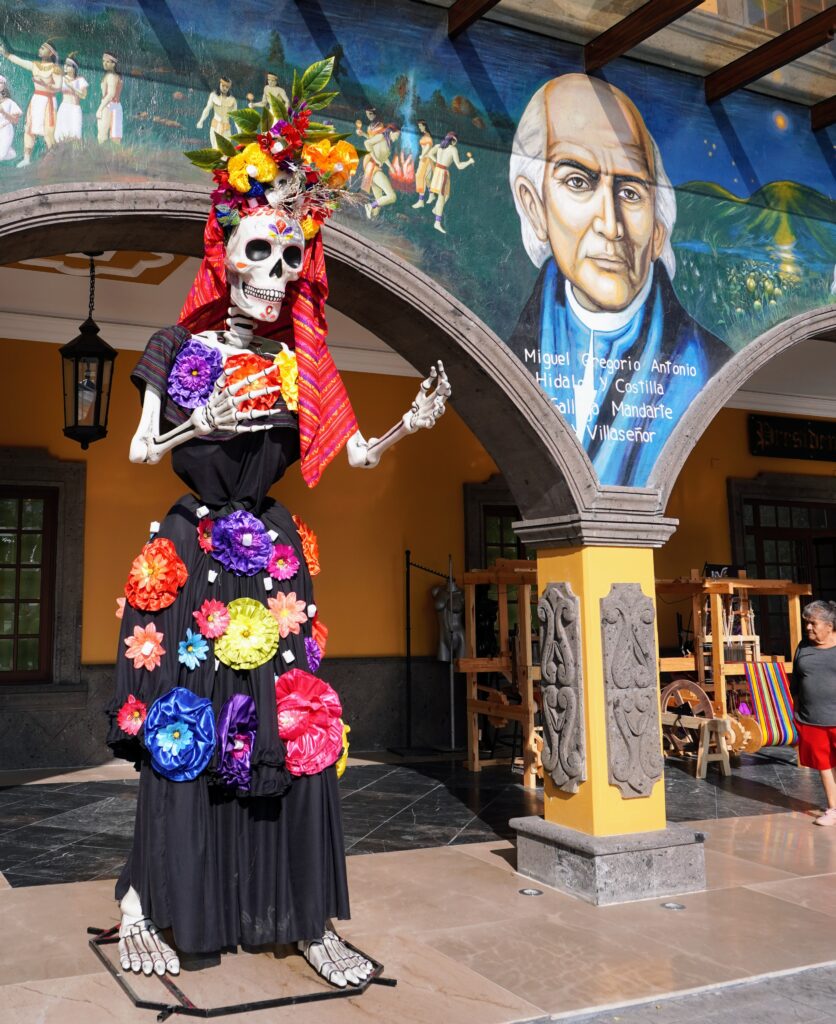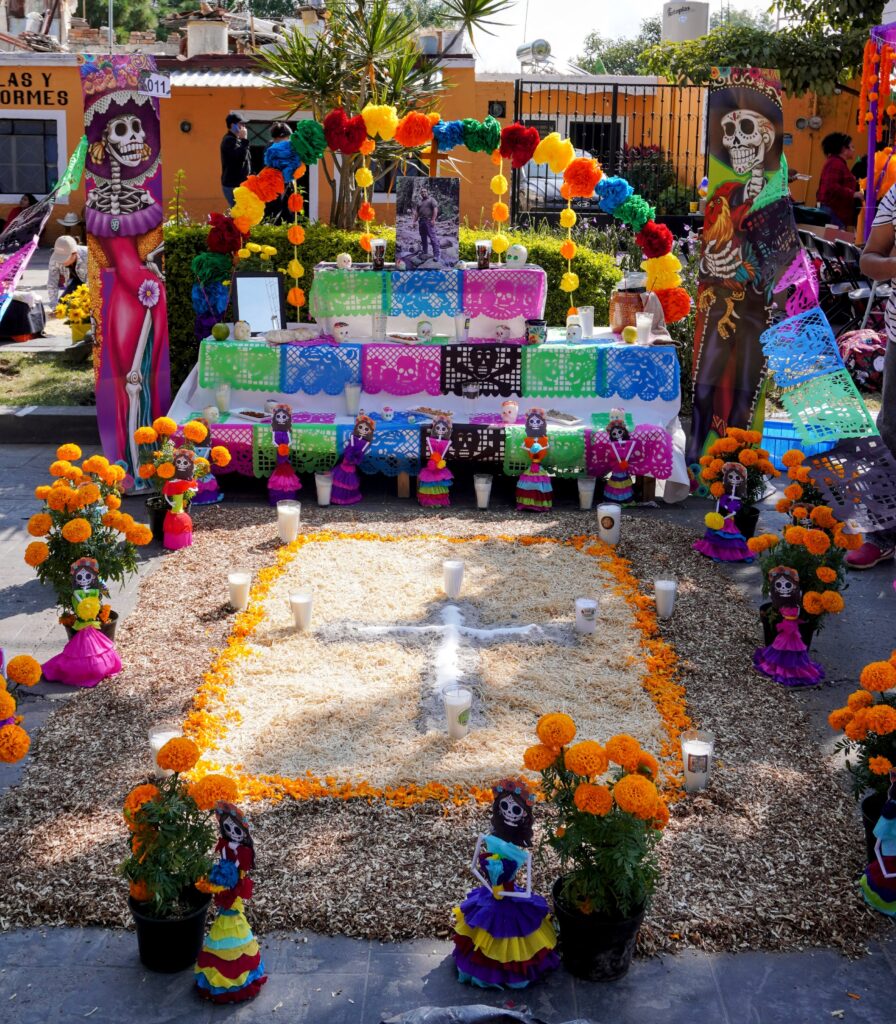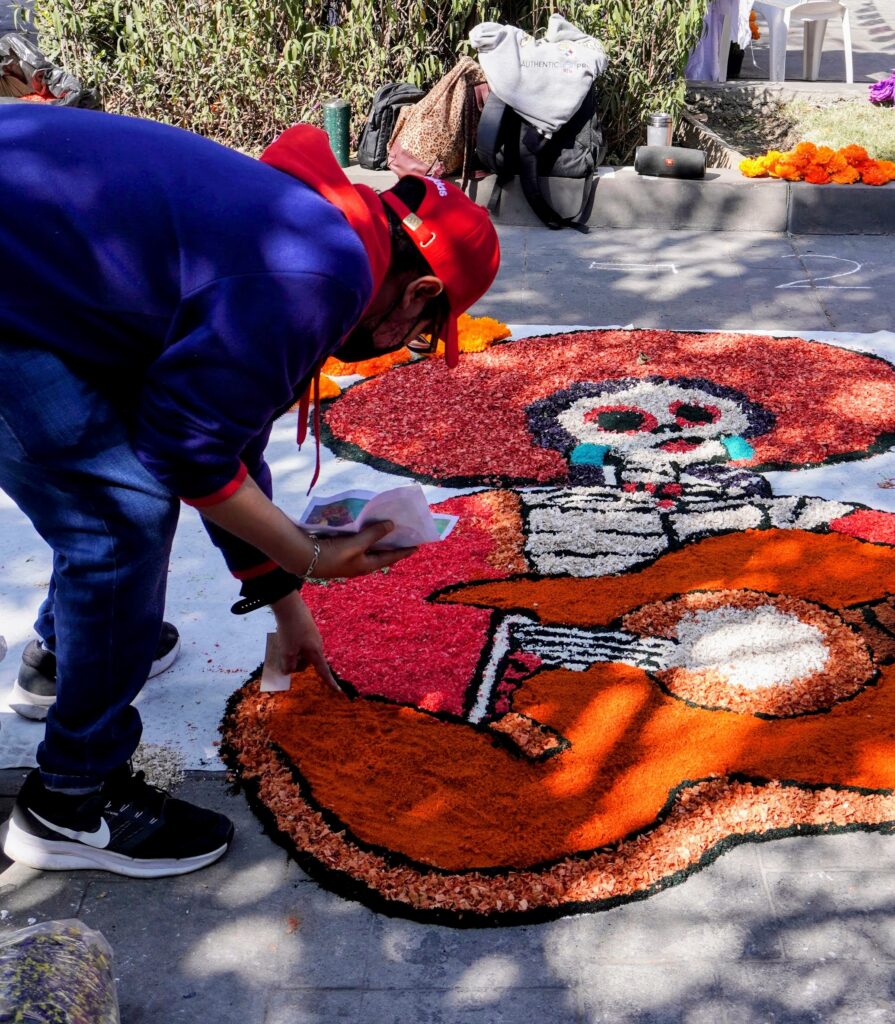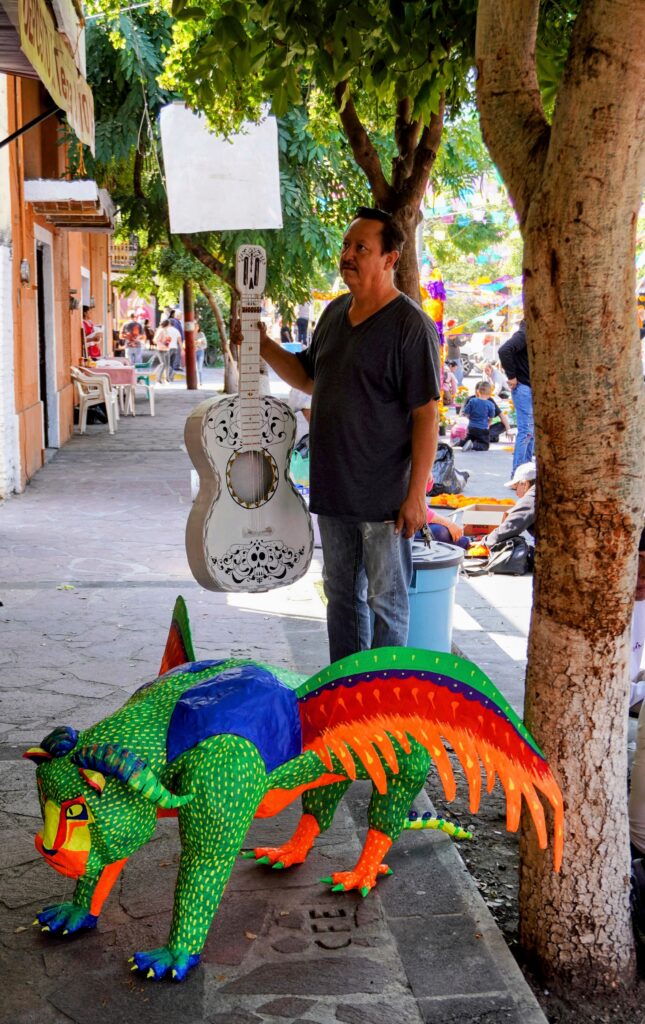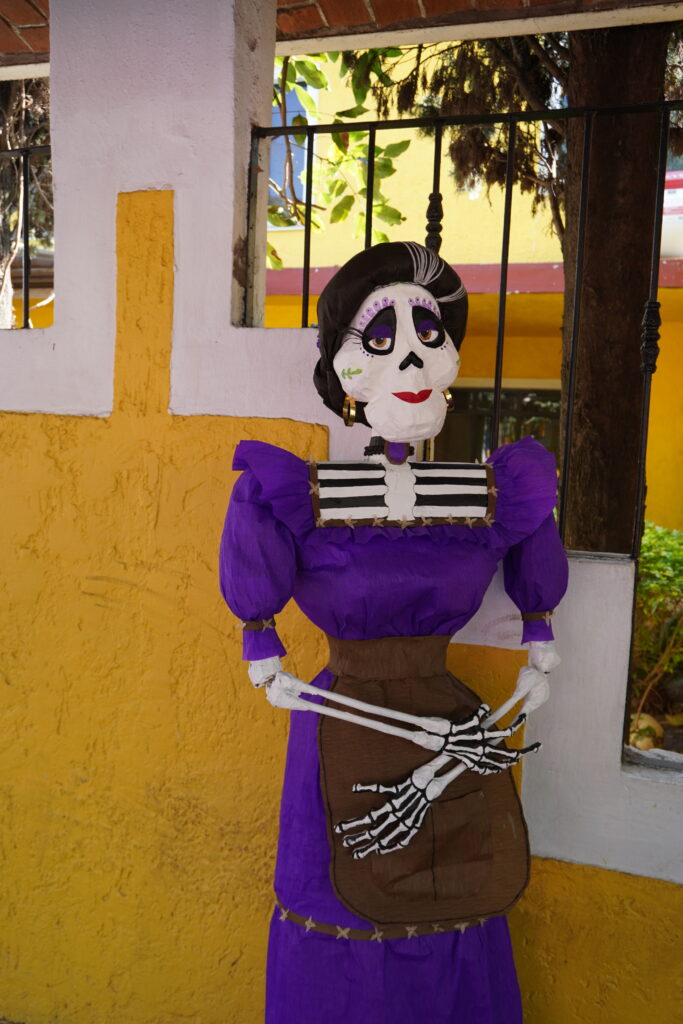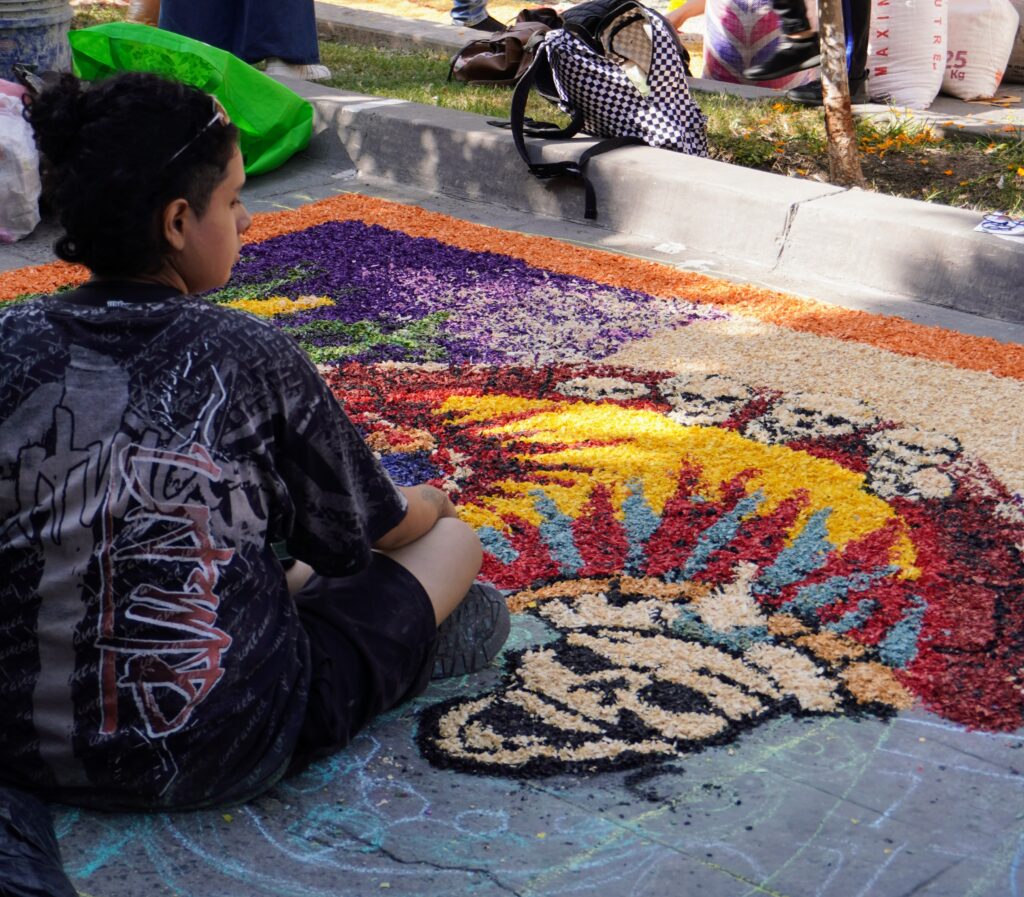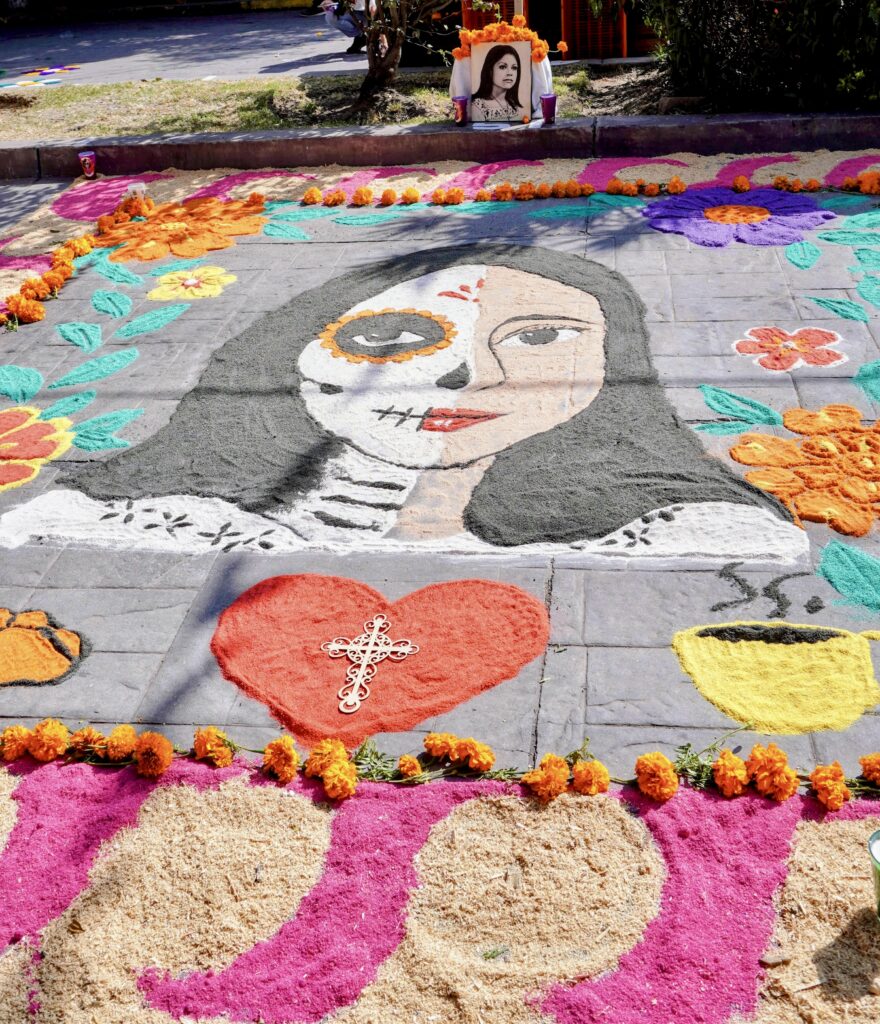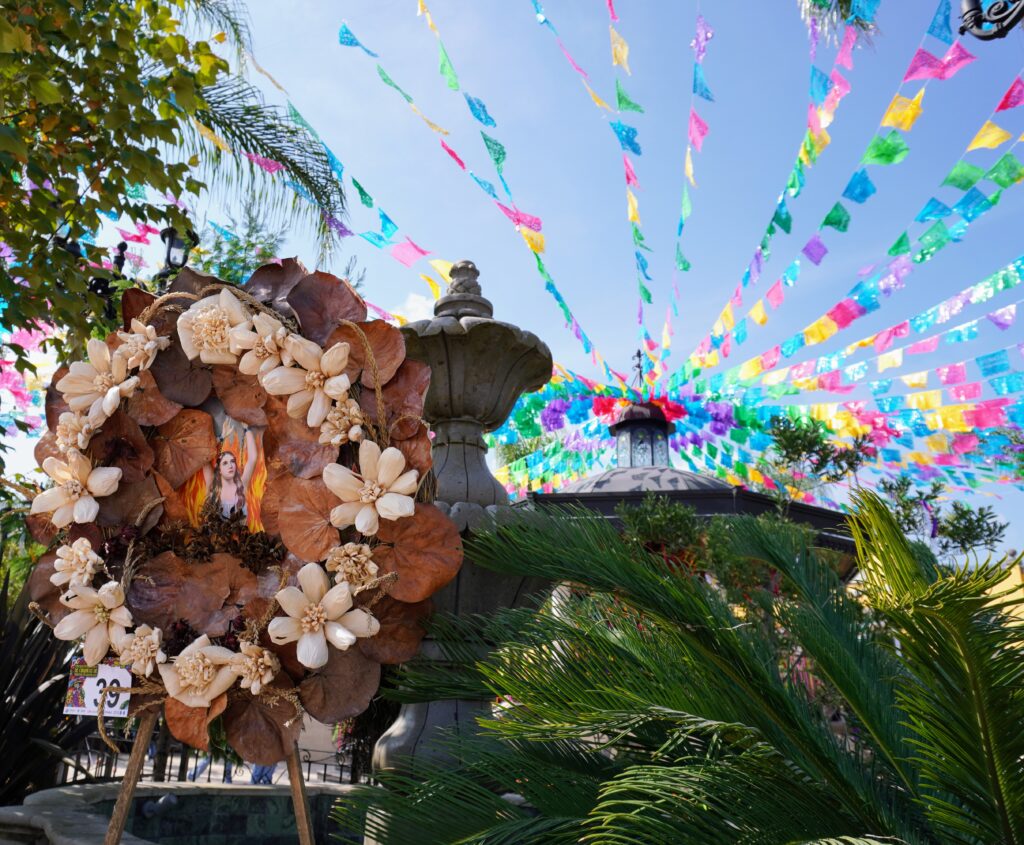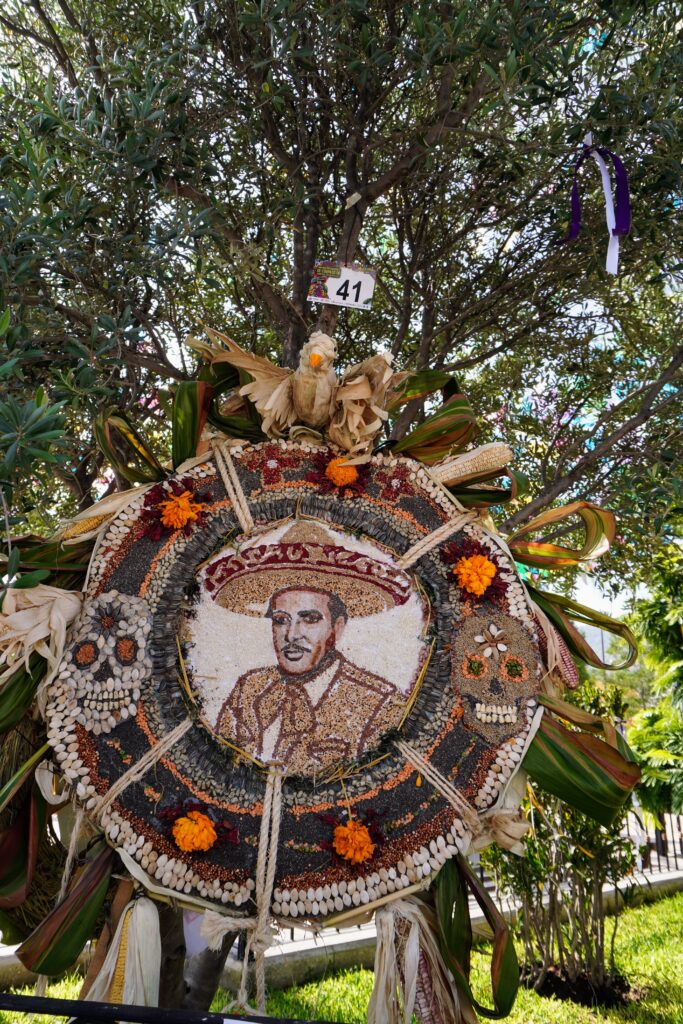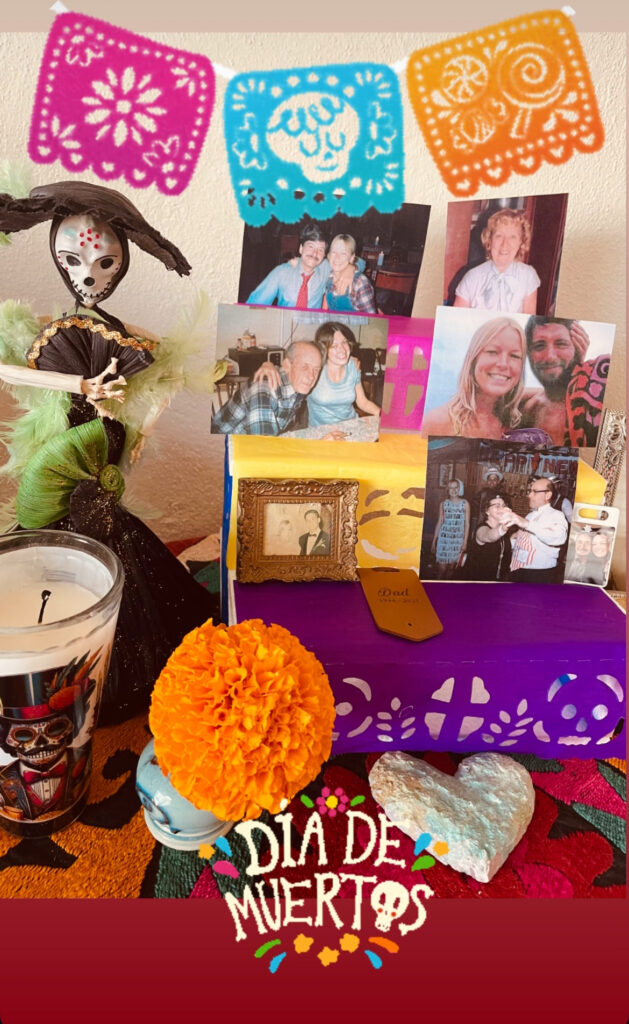Día de Muertos Adventures: From Tlaquepaque’s Parade to Ixtlahuacán’s Spectacle
October 25 officially kicked off our Día de Muertos (Day of the Dead) festivities — something I’ve been looking forward to since we decided to move to Mexico. Last year, we arrived just after the celebrations ended, catching glimpses of the vibrant decorations that lingered in the streets. This year, I was ready to take it all in.
Tlaquepaque’s Día de Muertos Parade
Our first stop was Tlaquepaque, a charming town just outside Guadalajara known for its art, music, and cultural traditions. The whole town came alive with color — brilliant cempasúchil (marigold) flowers, painted skulls, and dazzling altars. Restaurants went all out, creating elaborate ofrendas (altars) filled with candles, papel picado, and photographs of loved ones.
The Día de Muertos parade was incredible — a feast for the senses with Catrinas and Catrines, mariachi bands, and even hearses and coffins rolling by in creative displays. The atmosphere was pure joy mixed with reverence, a perfect reflection of the Mexican way of honoring life and death.
Celebrating in Ixtlahuacán de los Membrillos
On Friday, October 31, we ventured to Ixtlahuacán de los Membrillos, a nearby town in Jalisco that takes Día de Muertos celebrations to the next level. Locals told us this is the place to experience the most elaborate displays and competitions — and they were right!
Each year, the town awards prizes for the best tapetes (sand or sawdust art), Purgatory Brides, Catrinas, altars, and wreaths. The creativity and detail were breathtaking. The main plaza was transformed into a massive skull-shaped cemetery, with each grave honoring a departed loved one — beautifully illuminated at night.
We watched another unforgettable parade, a sea of colorfully dressed “dead” returning to celebrate with the living. Later, the church façade became a canvas for a stunning projection show filled with glowing skulls and dancing lights, followed by fireworks bursting through the church towers — truly spectacular!
The crowd was festive and welcoming. We chatted with new friends in the bleachers who danced along with the music, and even handed out Halloween candy to children in costume. Many Mexican families now celebrate both Halloween and Día de Muertos, seeing them as complementary — one for fun and imagination, the other for remembrance and reflection.
The night ended with a performance by the band Dinamo, who rocked the plaza with energy, flames, and pyrotechnics. It was a perfect example of how Mexicans love to celebrate life, and how lucky we are to be part of it.
A Peaceful Stay and a Beautiful Morning
We stayed overnight at a lovely hotel, Hotel El Dorado, just ten minutes from the plaza, a true oasis with lush gardens and three serene pools.
The next morning, we watched families and artists constructing their altars and tapetes, carefully arranging marigolds, candles, and offerings. Seeing the creative process firsthand made me appreciate the tradition even more — it’s an act of love and memory that brings the community together.
We wandered through the town, admiring the wreaths and tributes crafted for the competitions. It’s clear that every design carried deep personal meaning. As we left, we both agreed — this visit would become a new annual tradition for us.
🌼 Reflections
Día de Muertos in Jalisco is so much more than a holiday — it’s a living expression of love, remembrance, and joy. From Tlaquepaque’s parade to Ixtlahuacán’s incredible displays, the celebration captures the essence of Mexican culture: honoring the past while celebrating the present.
